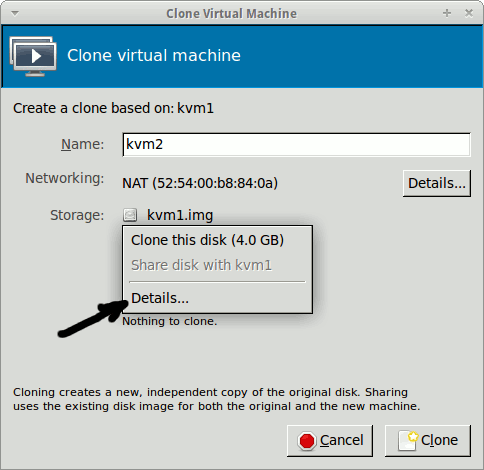Cloning VMs in KVM
Cloning kvm1
The image files take large space, so we need to create an additional folder to store them:
mkdir /home/hostadm/KVM chmod 755 /home/hostadm/KVM |
virsh shutdown kvm1 chmod a+r /var/lib/libvirt/images/kvm1.img |
For the storage option, select "Details",

then specify the new path: /home/hostadm/KVM/kvm2.img

Keep the default configuration settings for the other parameters.
This will be a new VM with the systems configurations originally set in kvm1.
Remove file /etc/udev/rules.d/70-persistent-net.rules
rm /etc/udev/rules.d/70-persistent-net.rules |
Edit file /etc/hosts and remove the line containing 127.0.1.1 kvm1.
Reboot.